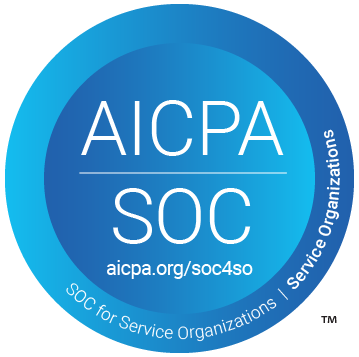- Solutions
-
Products
-
Resources
Sales Automation Tools | Cirrus Insight by Kristi Campbell View all Blog Posts >Get the App, Get the Sidebar, & Get Your Trial Going HereUnleash limitless growth opportunities by partnering with Cirrus Insight.
- Pricing
Filter By:
- All topics
- Sales Productivity
- Sales Intelligence
- Salesforce
- Sales Strategy
- Sales Prospecting
- Book More Meetings
- Best of
- Company News
- Product
- Sales Leadership
- CRM Admininstration
- Sales Metrics
- Supercharge Sales Activity
- Team Scheduling
- Admin
- serious insights
- Prospect Smarter
- Sales Activity Data
- Sales Forecasting
- Scheduling Solutions
- Prospect Faster
- Auto-Sync Everything To Your CRM
- Chrome
- Comparison
- Financial Services
- For Admins
- Getting Started
- IT & Security
- outlook
Subscribe to our Blog for the Latest Insights
Join our blog community to stay informed and receive fresh content and actionable tips directly in your inbox.
How to Build an Agile Sales Team in an Ever-Evolving Marketplace
Sales teams are often the drivers of continuous improvement.
Driven by metrics, they’re constantly looking out for the best way to do things while sharing insights about what works (and what doesn’t) with members of their team. In an ever-changing marketplace, they must stay one step ahead of everyone in order to succeed.
Continuous shifts in the consumer marketplace are directly tied to the workplace dynamic. It’s a matter of supply meets demand meets technology. Agile sales teams have borrowed a concept from process management to make process a strategic advantage.
New technology emerges, people adopt it, and businesses race to join them. As the dust settles, so too do the new norms around customer expectations — with companies continuously working to meet them for the sale.
This constant cycle of change still holds true in 2019 as the impact of Gen Z, expected to comprise 36% of the workforce by 2020, comes into focus. What these future generations seek from their employers mirrors that of the brands they choose to shop from — responsible consumerism from companies with social consciousness.
These new hires also bring with them a lifetime of tech savviness. They’re true digital natives, competitive, independent, and constantly developing their skillsets. Forcing traditional processes and tactics in the workplace just won’t cut it.
This is where the agile method comes into play.
A Brief History of the Agile Methodology
The history of agility begins in the late ‘90s/early ‘00s.
Business demands in software development were growing at faster speeds than developers could keep up with, often resulting in long lead times and/or the abandonment of projects altogether.
Thought leaders in the industry came together to develop a better process — one that could solve for fast deployment of ever-complicated hardware and systems into the hands of end users.
Agile was the answer.
This fast delivery approach shortened release cycles. Additionally, it allowed software teams to more effectively gather feedback for incorporating into future releases.
What Agile Means for Sales Teams
In the business world, agile project management has proven successful for more than just software development. Teams in marketing and sales have started to adopt the methodology for their own initiatives as well, with increasing success.
In sales, agile works to help teams be more flexible and effective in their approach to selling. This is especially important in a world where customer attention spans are shorter and much of the information sought out during a prospect’s research phase can be found online.
Additionally, sales teams have more access than ever before to data and lots of it. It’s hard to determine sales metrics that matter when operating under more traditional processes that never had to champion them.
Agile sales takes into account both of these challenges. It allows sales teams to better personalize their approach to buyer needs, while also making it possible to apply analytical insights into ongoing efforts.
Implementing the Agile Sales Methodology
Embracing the agile sales approach across your own team is about narrowing objectives and establishing accountability. This is achieved through regular individual and team-based updates around pre-determined tasks and milestones.
When implementing the agile sales methodology, use these building blocks for developing your team’s expectations and workflow.
Work in Sprints
Project management under the agile sales technique is organized into “sprints”. This refers to the one to two week period of time in which a team has to meet its set objective.
The goal of every sprint is determined at the start with kick-off meetings, generally lasting anywhere from one to four hours. Working under such a short timeframe requires teams to be incredibly narrowed in on what they aim to achieve, relative to their current deal flow.
In agile sales, you can think of your sprints as relative to both monthly and quarterly sales targets. Monthly targets can operate under the standard one to two-week timeframe. Longer-term quarterly goals can be addressed with sprints lasting upwards of 20 days.
Hold Daily Standups
Standups are short, daily meetings meant to keep everyone on the team in sync. At the start of every workday, gather your team for no more than 20 minutes.
Take turns going around the room to address what people are working on, what they’ve accomplished, and any roadblocks they might be facing. Doing so keeps everyone’s expectations aligned and fosters constant collaboration.
Focus on the Right Goals and Metrics
From afar, sales goals have a tendency to feel daunting and unattainable. Working under an agile sales model, however, helps in bringing them into focus.
For example, if you’re aiming to double your sales quota this year in comparison to last, it’s much easier to break that lump sum up by month. You can then account for ebbs and flows in seasonality to help you set short-term, reasonable objectives for achieving across every sprint. This is a great tool for sales managers looking to organize their teams and equip them with realistic goal-setting techniques.
It also puts into practice the regular revision of sales metrics.
As you work to more efficiently meet sales goals for any given sprint, you’ll set relevant metrics. For example, after reviewing issues from past sprints, you may conclude that you’re sabotaging the sales close by talking too much. It’ll make sense for you to then set milestones in upcoming sprints to mitigate this specific issue.
Develop Strong Leadership and Accountability
Sprint cycles are valuable for sales operations because of their reliance on collaboration — a word you wouldn’t necessarily associate with the more traditional sales team set-up. This is because when people think of sales, they tend to think in terms of “every rep for themselves”.
The competition of today’s consumer marketplace has changed all of that, however.
In order for individuals to succeed, they need to work together in learning and adapting to customer behaviors. This creates a supportive environment that elevates morale, rewards successful leadership, drives productivity, and leaves businesses as a whole with better long-term sales results.
Move Fast, Stay Flexible
The world moves fast. While one lost sale today may not seem like a big deal in the short-term, its impact can easily spiral over time.
With a finger constantly on the pulse, adopting an agile sales model keeps your team conscious. They aren’t forced to do something because that’s always the way its been done. Instead, they’re encouraged to regularly think outside of the box and proactively address blips on the radar before they become larger issues.
Final Thoughts: How to Build an Agile Sales Team in an Ever-Evolving Marketplace
Your customers are changing as quickly as your sales reps of tomorrow. And in order to build a high-performing team, you need to abandon inefficiencies for tactics that will help in both addressing present-day consumer behaviors and in keeping reps engaged.
Agile sales is the answer. But at the end of the day, don’t forget that all the technology in the world doesn’t replace the value of forging genuine human connections between your brand and the customers you serve. Getting real means you must know your customer and meet them where they are.
As you organize your team around the agile sales methodology, set them up with a tool that will optimize daily tasks, deliver valuable insights, and hold everyone accountable to the larger goals at hand. Get started with your 14-day free trial of Cirrus Insight today!





